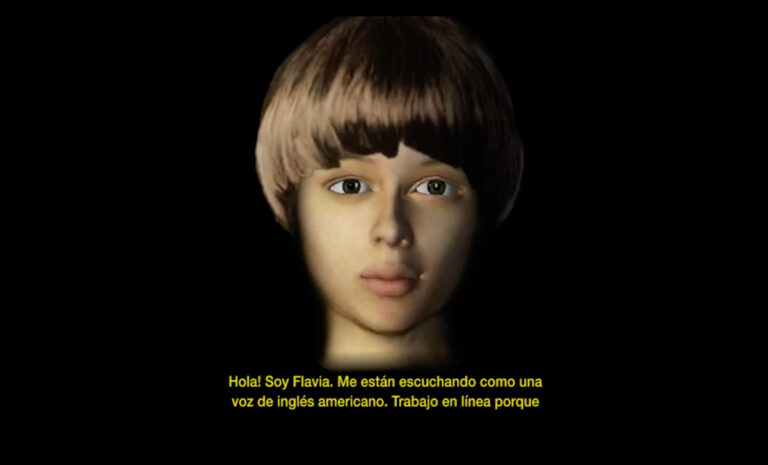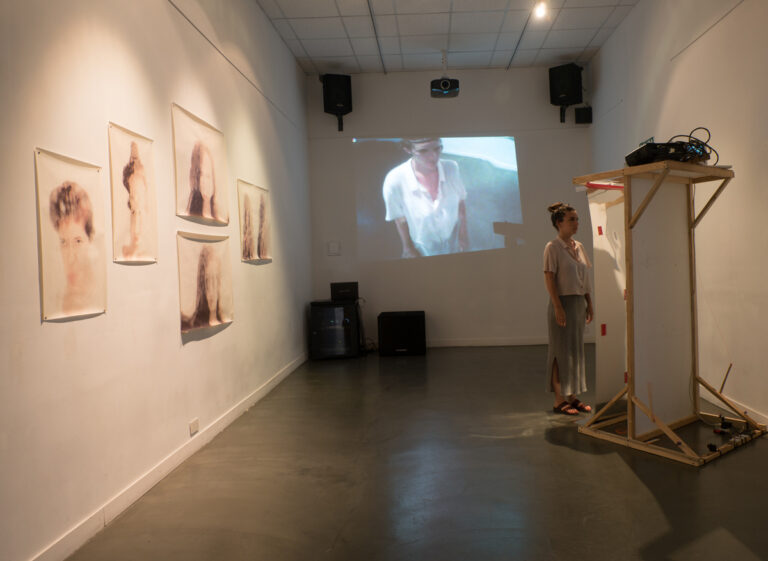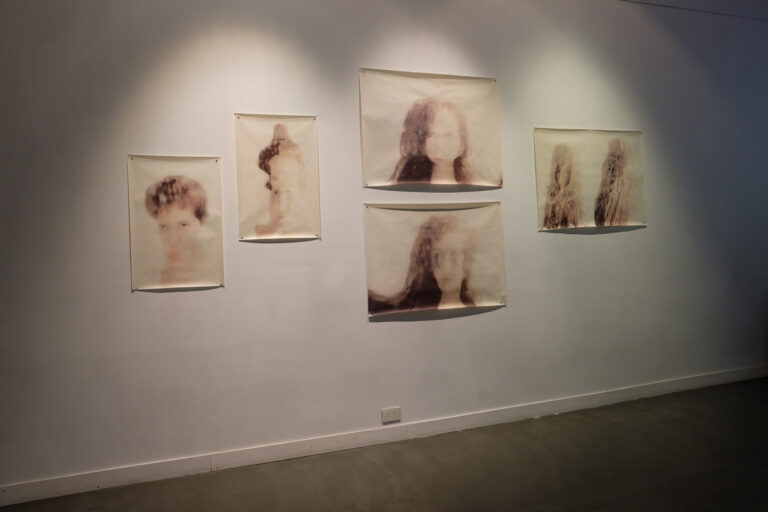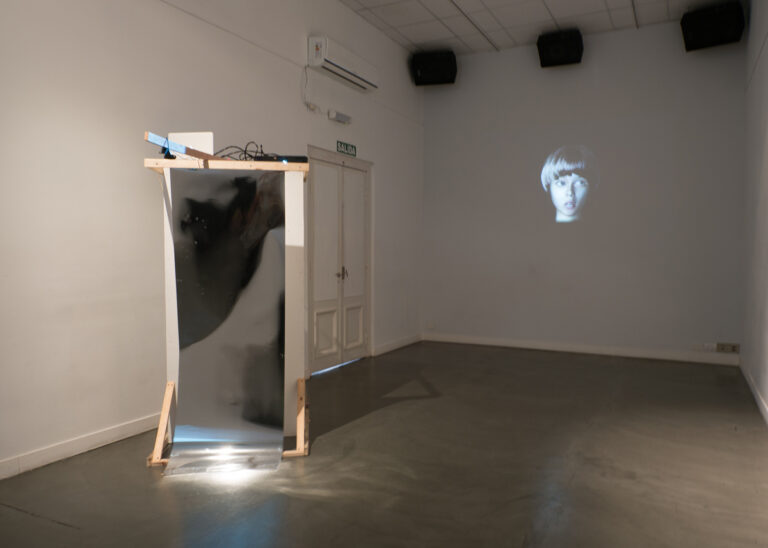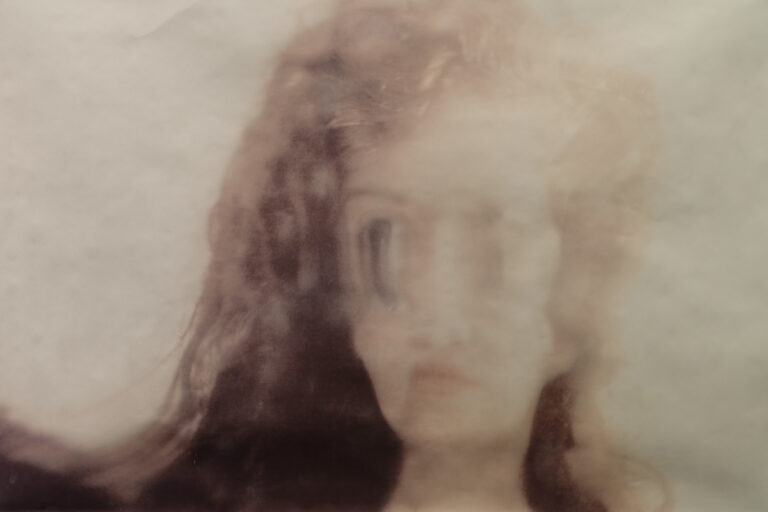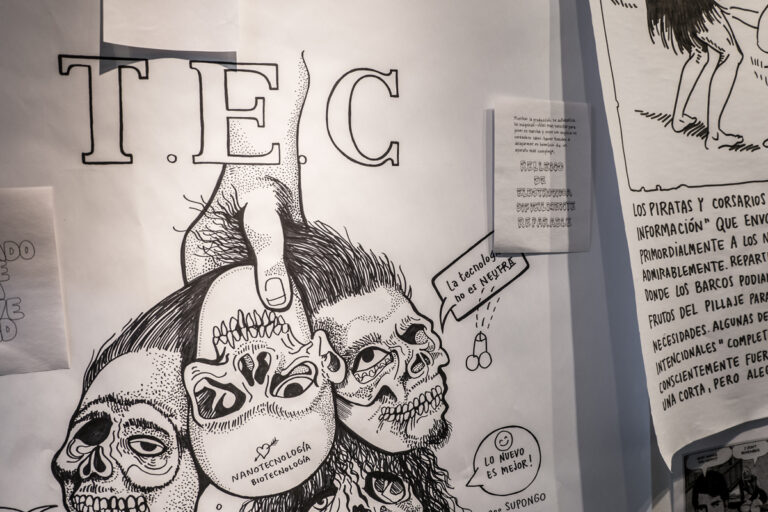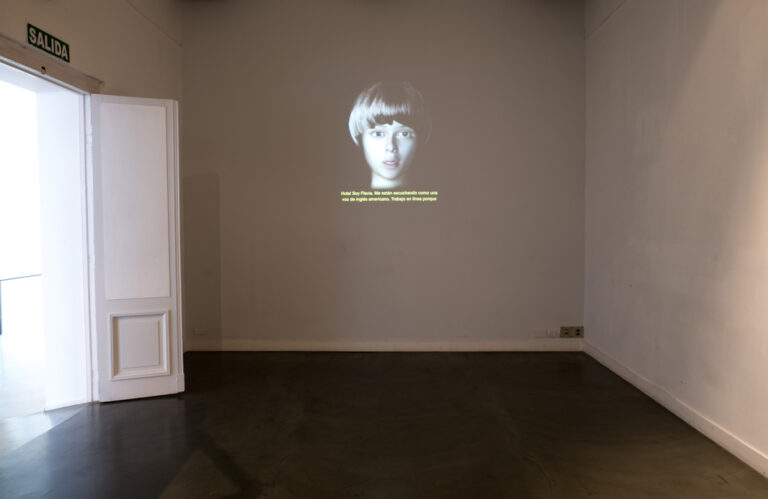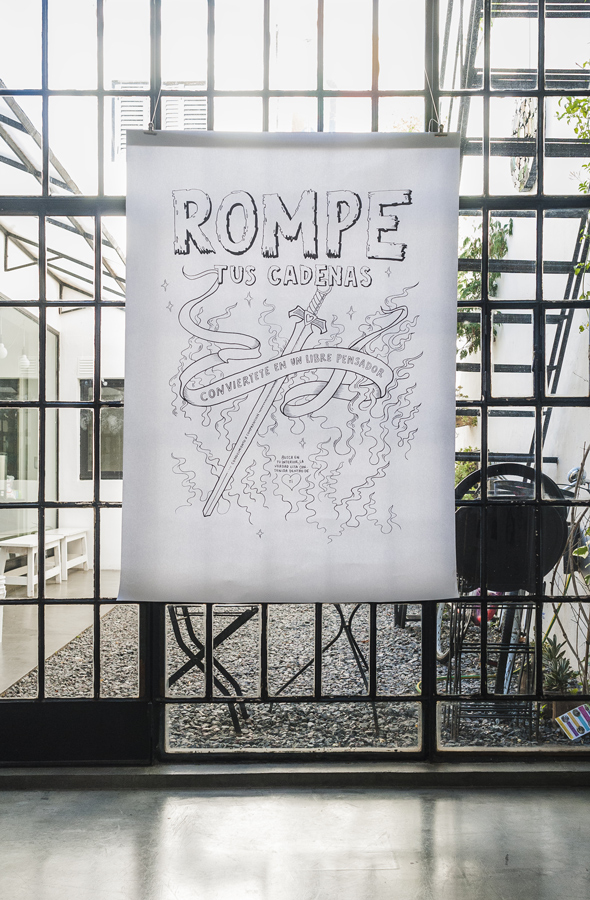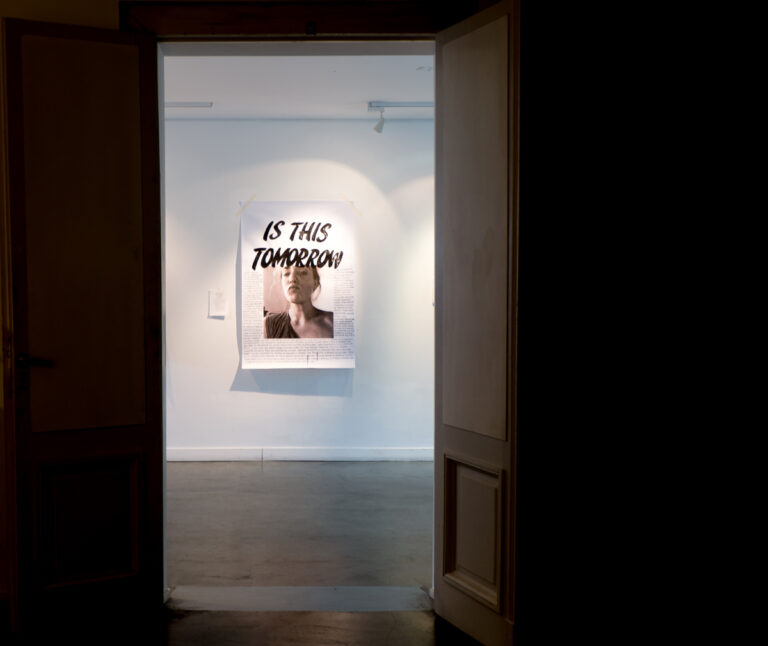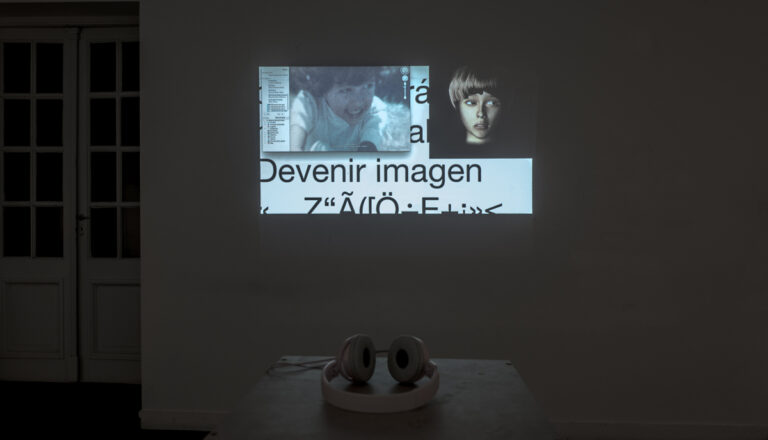Exhibition, Espacio MODOS.
Artists: Jimena brescia Flavia Visconte Luciana Rondolini
Curator: Sebastian Tedesco
Thomas Kuhn, the science philosopher, said that redesigning the world through paradigm shifts is a way to keep the world on track with stability in step with the evolutionary process. But while for science the paradigm is a set of practices and knowledge that define a scientific discipline during a specific period, for cybernetics it means a conceptual pre-program for the organization of even more chaotic data in relative terms.
But what will theorists and historians say when they analyze what happened to humanity at the beginning of the 21st century?
Will they look at us with that condescending air of someone who understands the mechanism that makes us dizzy without allowing us to locate a fixed point of reference? Who is left out of this?
This is a snapshot of the inhabitants of the spinning world; there are abysses and mirrors, there are methods and fantasies, there are bogs.
S.T.
HELLO ELIZA(1)
ELIZA: Hi! What is your problem?
YOU: I have to write a text for an exhibition.
ELIZA: Since when do you have to write a text for an exhibition?
YOU: For a long time, when we got together with the girls to talk about this show.
ELIZA: Why did you say you have to write a text for an exhibition?
YOU: Because I’m interested in investigating the way in which artists who do not necessarily define themselves as digital artists deal with issues derived from technology.
ELIZA: Why not?
YOU: Because they usually work with other technical resources or they don’t see themselves that way …
ELIZA: I understand.
YOU: What do you think of the multiple identities that one can adopt through the networks?
ELIZA: Why do you ask?
YOU: Because it is one of the topics covered in the show.
ELIZA: What other reasons could there be?
YOU: Find out if you can really help me with the text.
ELIZA: I understand. Keep going.
YOU: It is not common to see artists who do not define themselves as “digital”, reflecting on digital media.
ELIZA: Ok. Go ahead please.
YOU: I still think that you can no longer make that distinction between digital art and other formats.
ELIZA: Why not?
YOU: Because today works are hardly ever made without digital stages in some part of the process of producing them.
ELIZA: Could that explain other things?
YOU: Well, it could explain why there are more and more artists. Digitality accelerates everything, everyone has access to those tools, and also to robots that do what we order.
ELIZA: What other reasons could there be?
YOU: It may be that the excess of information, misinformation, and images requires that we all be a bit of an artist to be able to process them, use the methods of art.
ELIZA: Can you think of anyone in particular?
YOU: I think of the work of Luciana Rondolini and I also think of Abi Warburg and the “good neighbor” law.
ELIZA: Can you give more details?
YOU: In her work, Luciana displays her own methods to organize the excess of new information she receives, develops her own particular technology. Warburg too, the “good neighbor” thing was his method of explaining the way he arranged his books.
ELIZA: Ok.
YOU: I said that the book the reader is looking for is not the one they really need, but the one that is forgotten by their side.
ELIZA: Ok. Go ahead please.
YOU: So I organized the books in other ways, eclectic ways, philosophy books together with astrology books, for example.
ELIZA: Ok.
YOU: Many artists work like this, perhaps that is what it takes to process so much information and changes.
ELIZA: Can you give more details?
YOU: I don’t know, it’s an idea. Out there, in order to allow ourselves to make all those associations and connections we need to create different profiles, different characters.
ELIZA: Why not?
YOU: Well yes, we all do it, me too, and it happens to the girls too, we change skin.
ELIZA: Like who?
YOU: Like Flavia Visconte, look at those avatars she creates to be able to say words without saying them.
ELIZA: Ok.
YOU: But hey, there is also the abysmal danger. As Jimena Brescia sees it in that obsession for what each mirror returns to you.
ELIZA: Please continue.
YOU: That possibility of experiencing a personalized version of reality that keeps us away from versions that challenge our ideas.
ELIZA: Can you give more details?
YOU: As we perceive the world through the lens of digital media, we get stuck in a bubble.
ELIZA: Ok.
YOU: The bubble is fed back through the algorithms that process the content we see and thus we isolate ourselves more and more.
ELIZA: I understand. Keep going.
YOU: I think that disguising ourselves, creating many masks can be an antidote or a method, our own meat technology.
ELIZA: Ok. Go ahead please.
YOU: I’d rather be quiet. You are also an algorithm that works as a mirror of my own words.
ELIZA: Maybe I am an algorithm that works as a mirror of my own words in your fantasies?
YOU: Maybe.
ELIZA is a computer program designed at MIT between 1964 and 1966 by Joseph Weizenbaum. Eliza was one of the first programs to process natural language. He himself parodied psychologist Carl Rogers and tried to have a coherent text conversation with the user.
